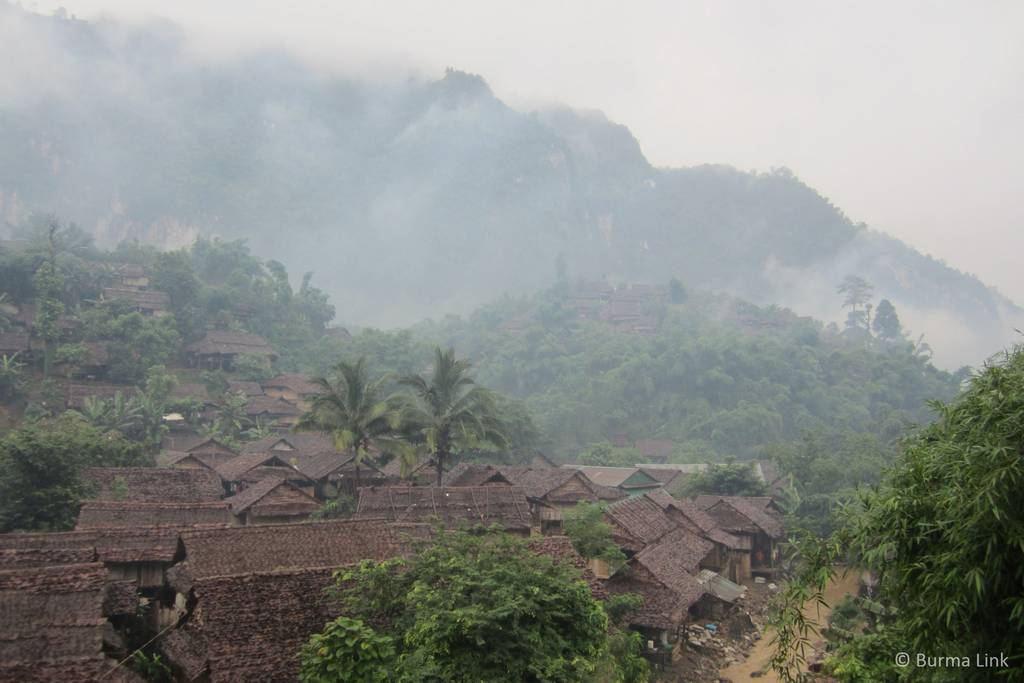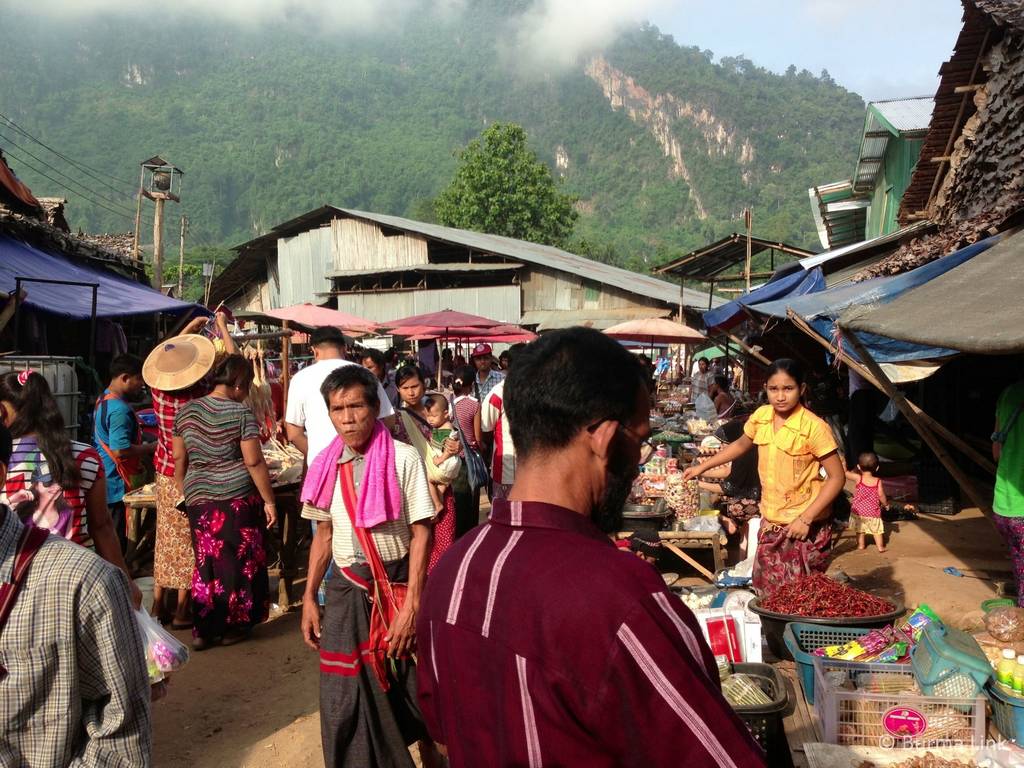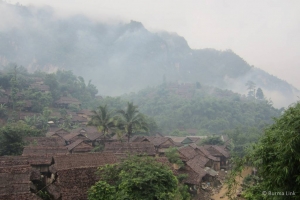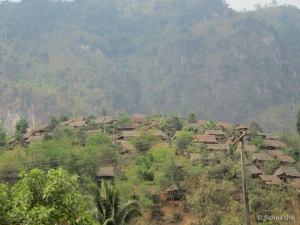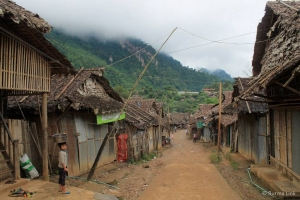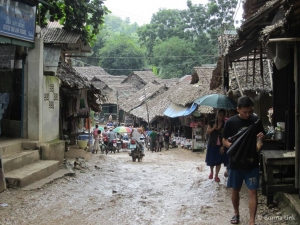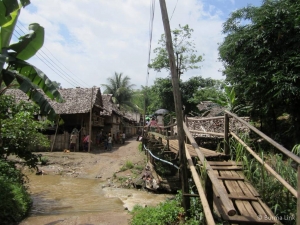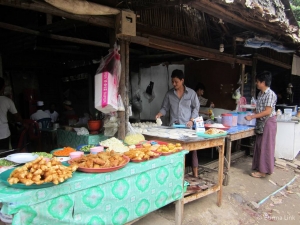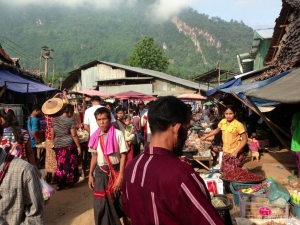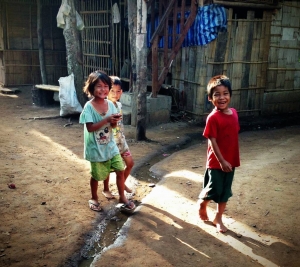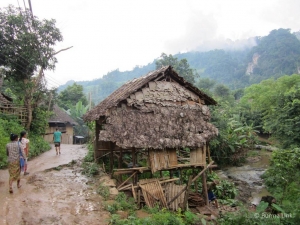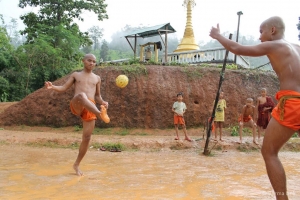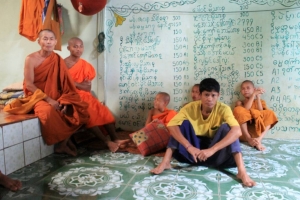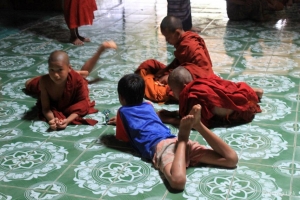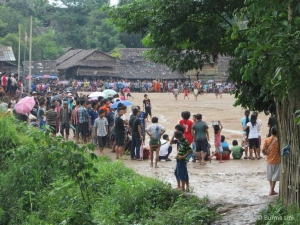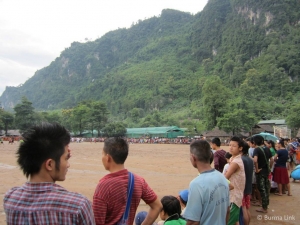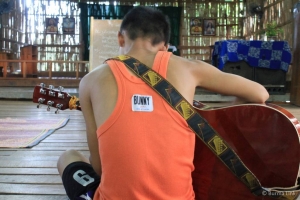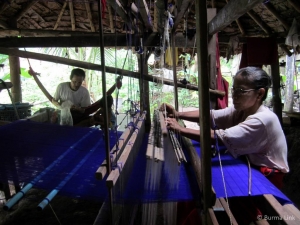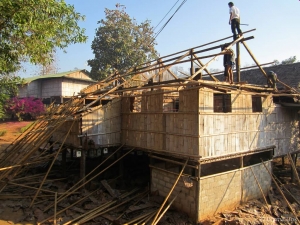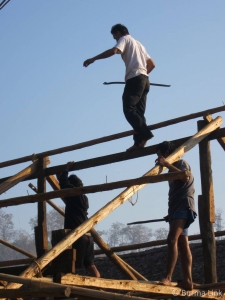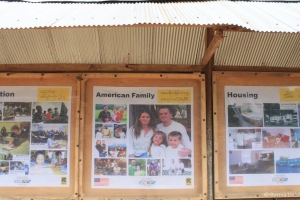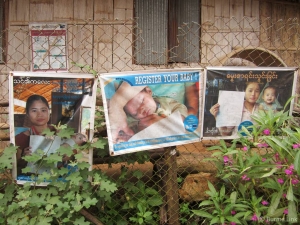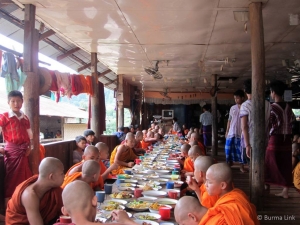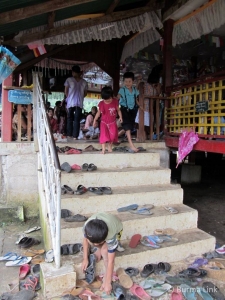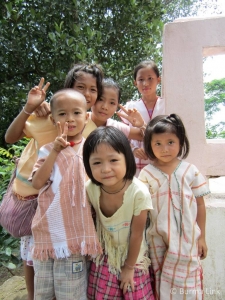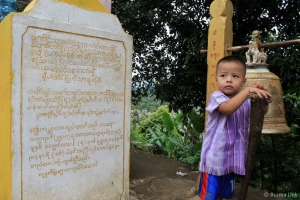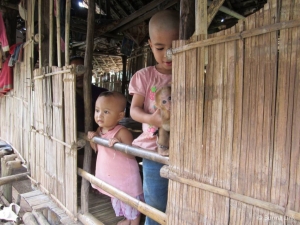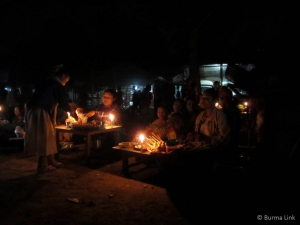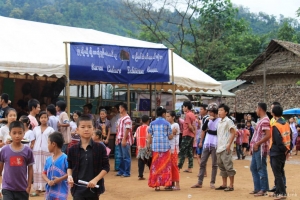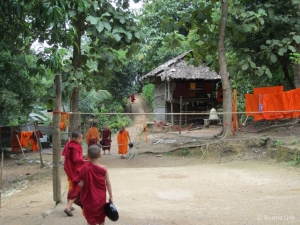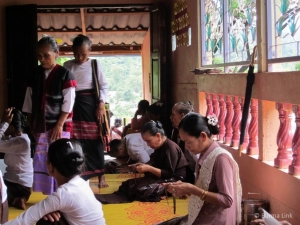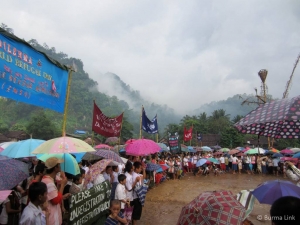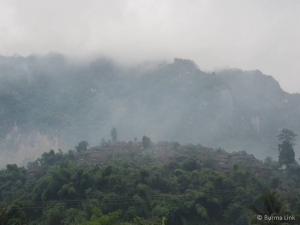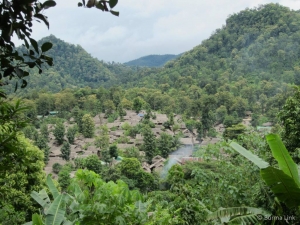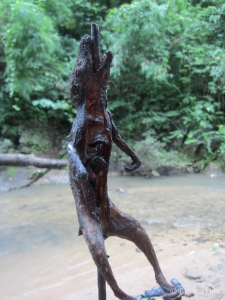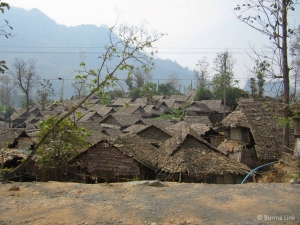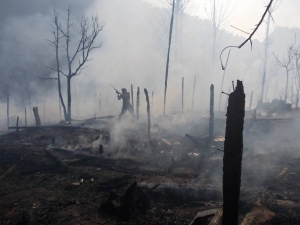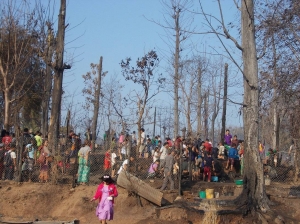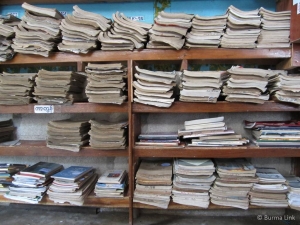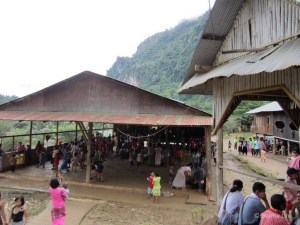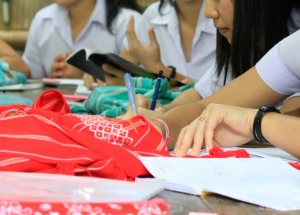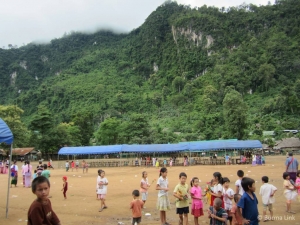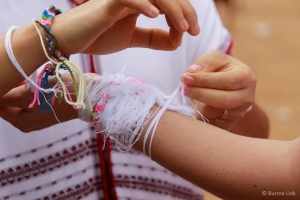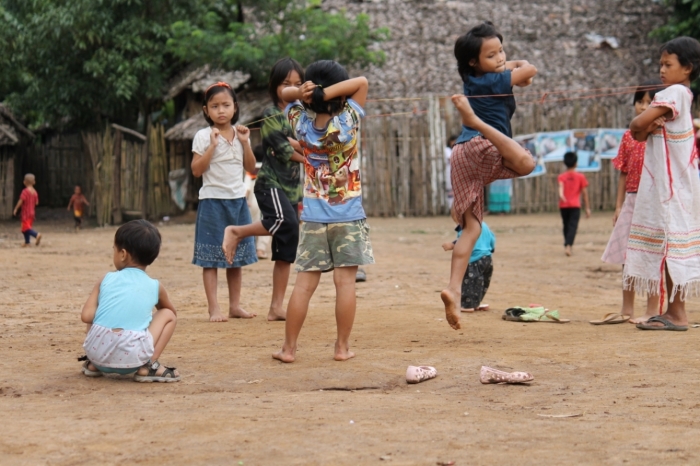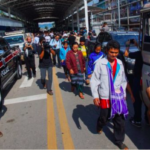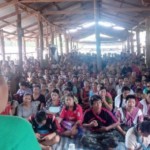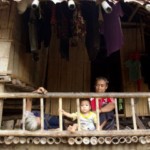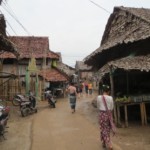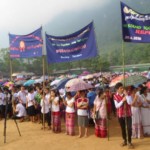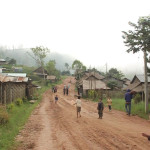- Mae La camp as seen from the road. (Photo: Burma LInk)
- View of the camp
- A young refugee boy in Mae La
- Muddy streets in Zone C during the rainy season
- One of the many bridges
- Tea shop
- One of the markets
- On the street
- Lanslide damage
- Monks playing caneball
- Monastery in Mae La
- Novice monks
- Watching football, a popular past time in Mae La
- Watching football in Mae La
- Playin guitar and singins in a church
- A Karen woman weaving traditional textiles that are commonly worn by the Karen, especially on special occasions
- Building a house
- Man building a roof
- Displaying American life to refugees in Mae La. (Photo: Liz Bordo)
- Posters encouraging refugees to register their baby
- Monks having lunch on full moon day
- Children at Zone C monastery on full moon day
- Children at monastery
- Boy at pagoda
- Adopted monkey
- Karen New Year stalls
- Karen culture exhibition room
- Praying
- Refugees plead for UN registration on the World Refugee Day in June 2012
- View of Mae La
- View of the camp from a hill in Zone C
- Many refugees risk leaving the camps and go hunting at night for rats and other animals to supplement their diet
- Houses in Mae La Zone C are built right next to each other due to space restrictions
- Mae La Zone C after a fire on December 27, 2013. (Photo: Eugene)
- After the fire in December
- Camp library where refugees have access to uncensored materials
- School at a monastery
- Thousands learn about their cultures as well as to read and write their own languages in Mae La camp
- Wrist tying day
- Wrist tying ceremony is rooted in animist beliefs of calling back spirits. (Photo: Liz Bordo)
- Children playing
Mae La refugee camp
Many people around the world take for granted the freedom to travel and freedom to work. Others have learned to take for granted that they are unable to do so. These include thousands of refugees from Burma who have lived confined to the camps in Thailand for nearly 30 years.
With a population of 42,000, Mae La is the largest of the camps on the border. Most of the camp residents are ethnic Karen who have fled armed conflict and human rights abuses in their homeland. Despite severe restrictions and depressive realities, refugees in Mae La strive to remain active and lead their lives the best they can. This huge enclosed bamboo town, nestled between the mountains and the road, has not only become a place where refugees survive but also a place they call home. For many young refugees, Mae La is where they were born and where they grew up, and the only reality they have ever seen exists within the fences of the camp.
Due to its size, Mae La is also considered as the educational centre for refugees, and the population includes thousands of motivated young people who are determined to educate themselves, a goal largely unattainable in their homeland. As a result of burmanization and vastly inadequate and inaccessible education in Burma, thousands have learnt about their own history, culture, languages as well a range of other subjects only after arriving to the camp.
As Thai authorities only allowed refugees to register with the UNHCR in 2004 and 2005, nearly half of the refugees in Mae La are not registered with the UNHCR and thus unable to apply for resettlement. Nevertheless, for thousands of refugees their only way out has been resettlement mainly to the United States. In January 2014, for the refugees’ dismay, The United States officially ended their resettlement programme for Burma’s refugees.
Today, about 120,000 refugees remain in ten camps along the border while another two to three million people of Burma remain internally and externally displaced. Although there is now more hope for change than for decades, real tangible changes for Karen and other ethnic people are yet to be seen. Ceasefires remain fragile and the situation unpredictable, ethnic border areas are still infested with landmines and political goals of the ethnics remain unaddressed. After decades of suffering, it is hoped that refugees in Mae La and other camps will be able to return with a sense of dignity and hope for their future.
Photos by: Burma Link, Eugene, Feliz Solomon, Liz Bordo, and Oil Jiraporn
Read more about the refugee camps here
Read more about repatriation here

